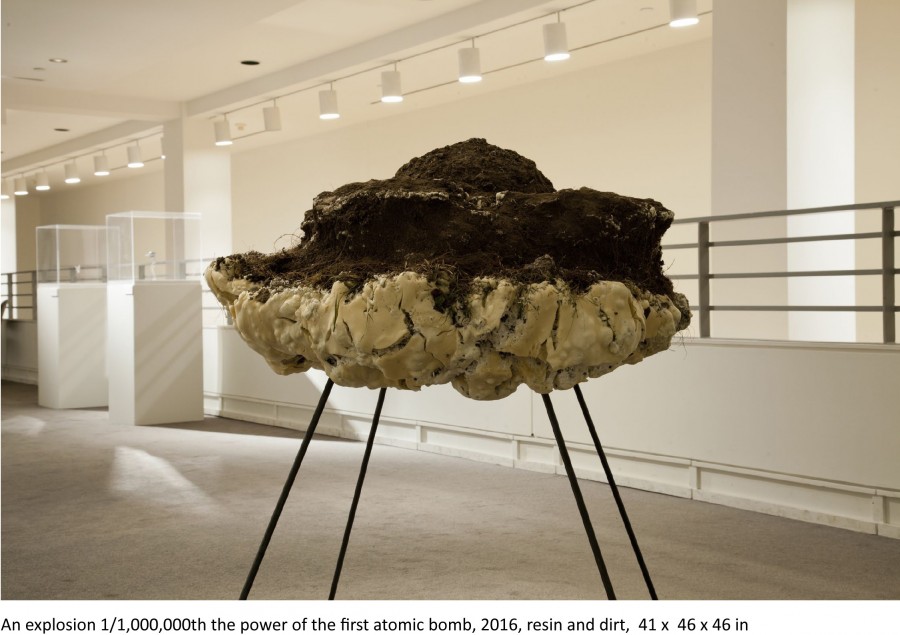small Trinity, 2016
small Trinity was the title of my MFA thesis exhibition, which was mounted at the Carleton University Art Gallery in the last two weeks of August 2016. For the exhibition, I presented the three series of works in which I attempted to capture the essence of an explosion as a sculpture: the Exploded Vases (2014-15); the Cast Explosions (2015), and the small Trinity series (2016). The objects provided viewers with the chance to examine an explosion in a stilled state, but also to consider the enormous powers we humans can unleash.
For the title series, small Trinity, I set myself the goal of casting an explosion 1/1,000,000th of the power of the first atomic bomb, but this proved easier said than done. The Trinity test was a plutonium-based explosion conducted by the US Army in 1945, with a yield equivalent to 20 kt (20,000,000 g) of TNT (trinitrotoluene). From a conceptual standpoint, 1/1,000,000th is somewhat of a magical division, and one that maintains the mystery of the powers at hand. From a purely practical standpoint, however, it is still a substantial explosion. Wary of this, I started small and ignited a charge 1/1,000,000,000th of the power of the Trinity in a ball of soft clay. The charge created a void within the clay, which could then be filled with wax and later cast in aluminum. I slowly increased the charges by multiples of 5 and 10, but both the technique and the ability to safely create the artwork broke down just beyond the 1/1o,000,000th mark. Fortunately, the Canadian Explosives Research Laboratory at Natural Resources Canada provided assistance and the goal was achieved by blasting a crater in the ground and then casting it with an expanding resin foam.
The small Trinity (2016) sculptures are fractional manifestations of forces well beyond comprehension. Each is formed from an actual, measured explosion, and is therefore not an image of an explosion, but the terrible thing itself. This is true of all the works presented in the exhibition. Whether using a simple firecracker or evoking a nuclear blast, the processes I used allowed for the explosions to take form and be captured, without manipulation. To consider the ramifications of these forms today is to see, perhaps, how precarious our existence continues to be.
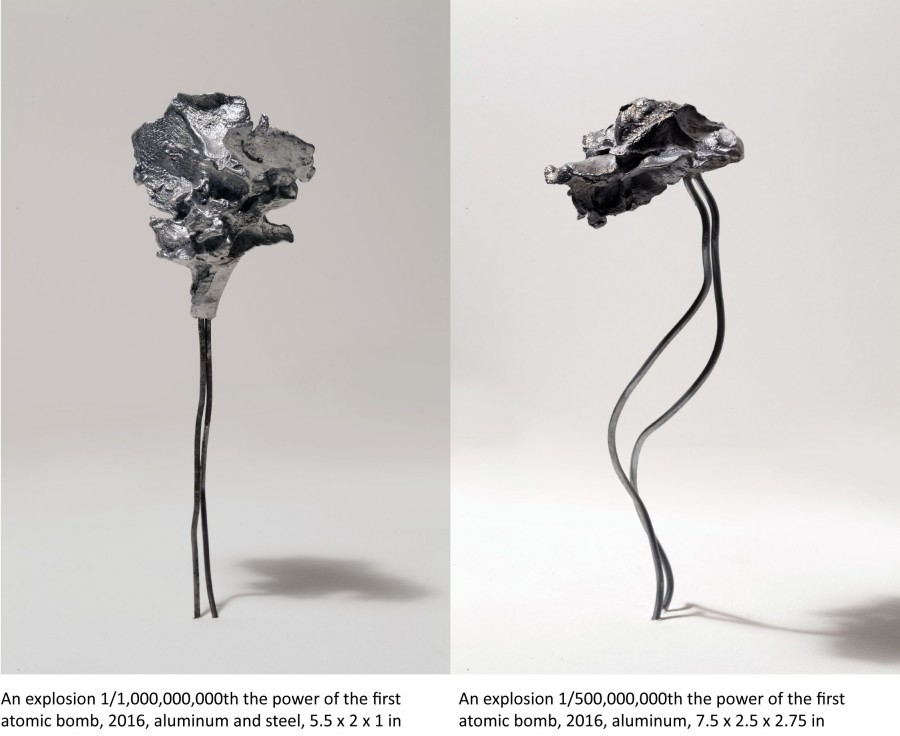
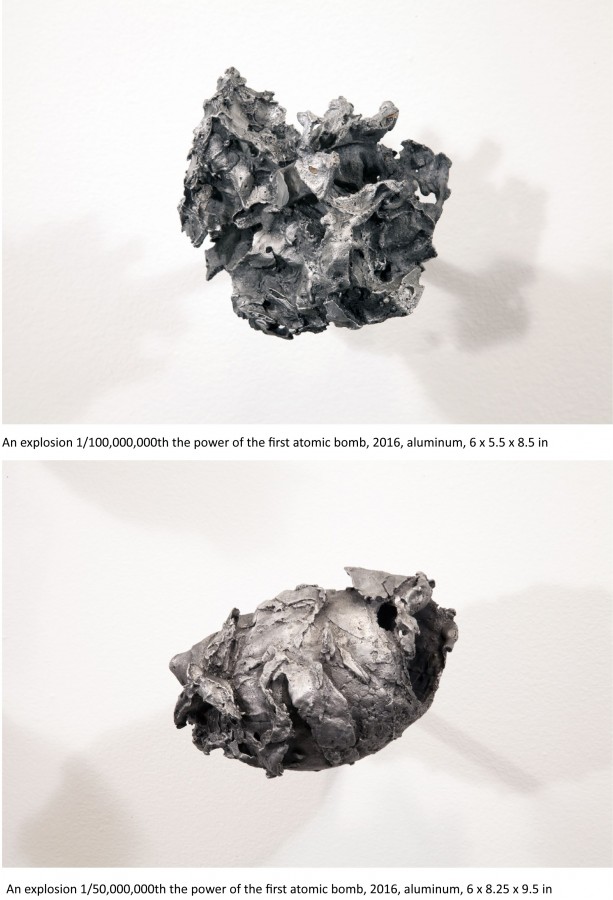
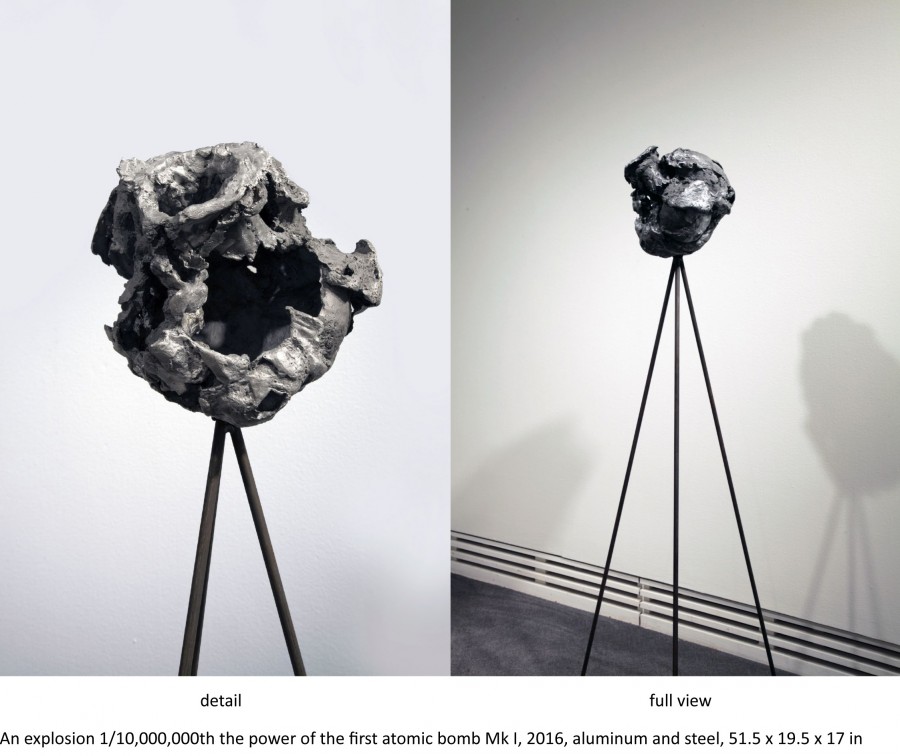
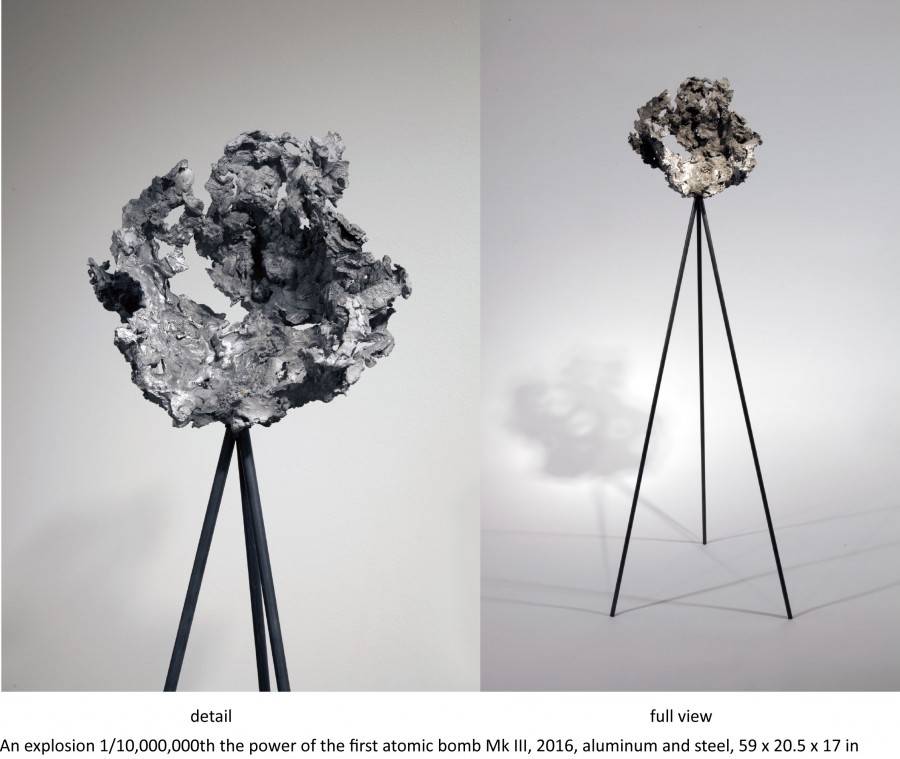


An explosion 1/5,000,000th the power of the first atomic bomb
